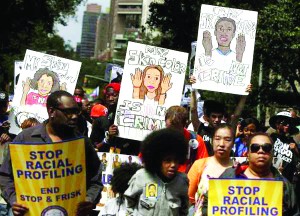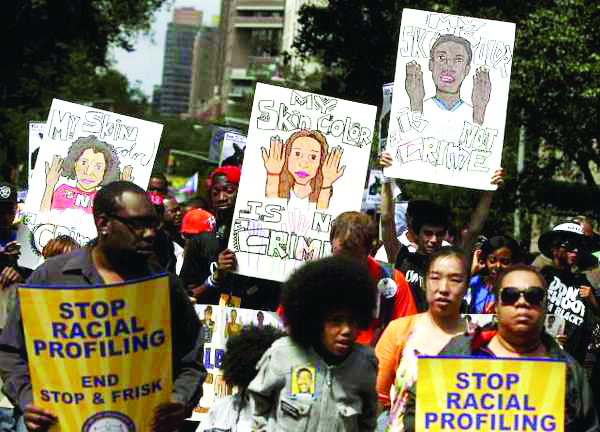
Queens, the city's most ethnically diverse borough showed up as expected on the radar—generally, cops stop a disproportionate number of minorities as crime suspects.
Opponents of the NYPD’s controversial stop and frisk policy had their suspicions largely confirmed with the department’s recent release of a 2011 report detailing that blacks and Hispanics were stopped by police more than three times as often as Whites and Asians.
In Queens, statistics compiled for the 102nd, 104th, 106th and 112th precincts showed little deviation from the Citywide stop and frisk numbers which showed, generally, that police stop a disproportionate number of minorities in the city for suspected crimes.
Further, the statistics showed that despite 2010 Census data which shows Whites as comprising nearly 35 percent of the total New York City population, those same statistics revealed that they represented only 9.4 percent of police stops.
Conversely, blacks, comprising roughly 23.4 percent of the city’s population accounted for a seemingly disproportionate 53 percent of police stops followed by Hispanics who made up 33.9 percent of all police stops. Asians were stopped by police the least making up only 3.6 percent of all stops.
According to the report, the top citywide suspected crime, which resulted in stops by police, was weapons possession, accounting for about a quarter of all stops.
In the 102nd precinct, which comprises Kew Gardens, Richmond Hill, Woodhaven, and the Northern part of Ozone Park, robbery was the top suspected crime, accounting for 31.2 percent of all stops.
But, as in other precincts across the borough, police stops corresponded closely with two key factors: dominant racial population, as well as the largest number of known violent suspects. Hispanics were stopped most often in the precinct, comprising 48 percent of all police stops.
Several city-based rights groups have been highly critical of the NYPD’s policy which seems to stop and detain minority groups at a higher rate than Whites and Asians in the city.
On its website, the New York Civil Liberties Union says that the police department’s own policies are troubling. “The NYPD’s stop-and-frisk practices raise serious concerns over racial profiling, illegal stops and privacy rights. The Department’s own reports on its stop-and-frisk activity confirm what many people in communities of color across the city have long known: The police are stopping hundreds of thousands of law abiding New Yorkers every year, and the vast majority are black and Latino,” the group says.
In the 104th precinct, which encompasses Ridgewood, Glendale, Maspeth and Middle Village, Grand larceny auto was the top suspected crime, accounting for 30 percent of all stops.
Hispanics were stopped in the precinct more than both blacks and Asians but again, the disparity could be attributed to a much higher rate of known violent crime suspects. More than half of all known, violent suspects in the 104th were identified as Hispanic.
However, while some general trends could be discerned from the NYPD’s report on stops, other results were mixed or inconclusive.
For example, over in the 106th precinct, which takes in Ozone Park, Lindenwood and the Resorts World New York Casino at Aqueduct Racetrack, the top suspected crime was robbery.
But, somewhat surprisingly, Asians logged the most stops in this precinct, at 36.7 percent of all stops despite the fact that there were a higher number of known Black violent suspects in the precinct, at 47.5 percent compared with Asian known violent suspects at 25.6 percent.
And, not surprisingly in Queens were statistics for the 112th precinct, which includes both Forest Hills and Rego Park. The precinct logged the fewest total stops in the borough, just under 3,500, with Whites accounting for the majority of stops at 38 percent. The top suspected crime was robbery.
Back in January, the Daily News reported that an important part of the NYPD’s stop and frisk tactics had been ruled unconstitutional when a Manhattan Federal Court Judge ordered police to stop making some trespass stops outside private residential buildings despite the fact that a landlord had given officers permission to do so as part of the NYPD’s “Clean Halls” program to help make city buildings safer.
In addition, just last week, the NYCLU introduced its own tool to help citizens combat stop and frisk policies with a “Stop and Frisk Watch App,” described in a press release as an innovative smart phone application that empowers New Yorkers to monitor police activity and hold the NYPD accountable for unlawful stop-and-frisk encounters and other police misconduct.
According to the group, the app allows bystanders to fully document stop-and-frisk encounters and alert community members when a street stop is in progress.
By Alan Krawitz

